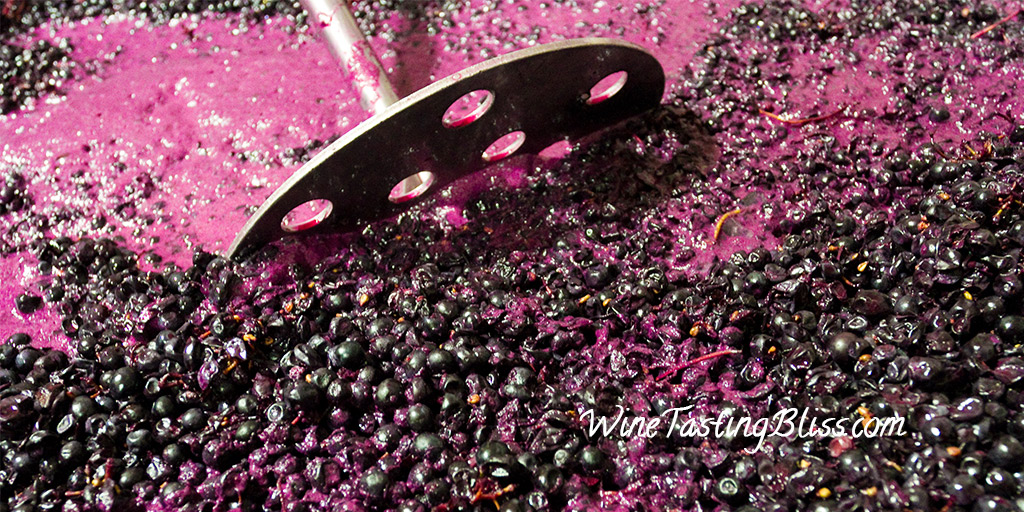The art of making wine is full of colorful terms and mysterious rituals. Follow each step meticulously, add in a dash of artistry, and the resulting wine can be truly amazing! One rigorous, yet critical step in the wine making process goes by the endearing name of “punch down.” Ever wonder what in the world that term means?
After the grapes are harvested, cleaned, and crushed, it is time for fermentation. Otherwise you just have some not-so-sweet grape juice. Fermentation is the process whereby the yeast converts the sugar in the grape juice into alcohol. This fermentation process involves a lot of human interaction. Enter the punch down!
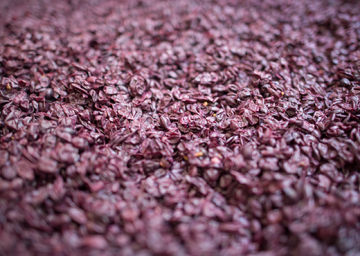
During fermentation, the crushed fruit is a mishmash of juice, grape skins, seeds, pulp and stems. The solids float to the top of the juice, buoyed up by the carbon dioxide gas released by the fermentation process. These floating solids are collectively termed the cap. This cap is full of delicious flavor elements that can add richness and character to the wine. If only the juice could maximize its contact with this wonderful mass!
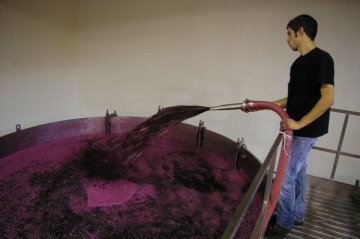
There are two basic way to maximize this juice/cap contact: punch down and pump over. A pump over is pretty self explanatory. Just pump juice from the bottom of the vessel and pour it over the cap. The cap remains pretty much intact, while the juice drizzles down over the cap. This adds oxygen, critical to fermentation without overdoing the juice-to-cap contact.
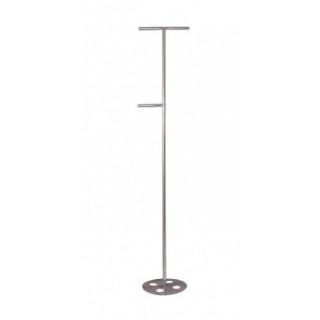
A punch down is quite a bit more work. Using a gadget that looks a lot like an overgrown potato masher, the cap is broken up and pressed to the bottom of the vessel. This adds oxygen and causes quite a bit of juice-to-cap contact. Each chunk of cap eventually floats back up to the top. The process of punching down is physically exhausting if done by hand. That could be why wine makers is such good shape.
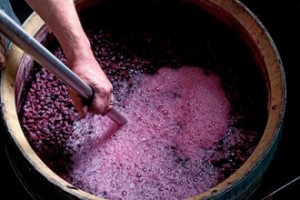
Either pumping over or punching down, the benefits are substantial. Carbon dioxide is freed from the mixture while oxygen is added. This is a boon to the yeast, improving fermentation. The juice becomes darker, more intense and flavorful, and somewhat more astringent. The cap is kept moist, preventing the unwanted production of acetic acid (think vinegar) which can ruin wine pretty quickly. Most wine makers perform one of these processes 3-5 times a day during fermentation. Wine making is definitely an active verb!
So keep all this in mind if you are ever invited to take part in the romantic-sounding process of making wine. If there is punching down on the agenda, you will need more than one glass of wine to sooth your muscles by the time the day is done!
About the Author: John grills a mean steak and is always in the market for another wine fridge. Believes that if a winery has more than 10 employees, it's probably too big. Buys wine faster than he drinks it, but who cares?

